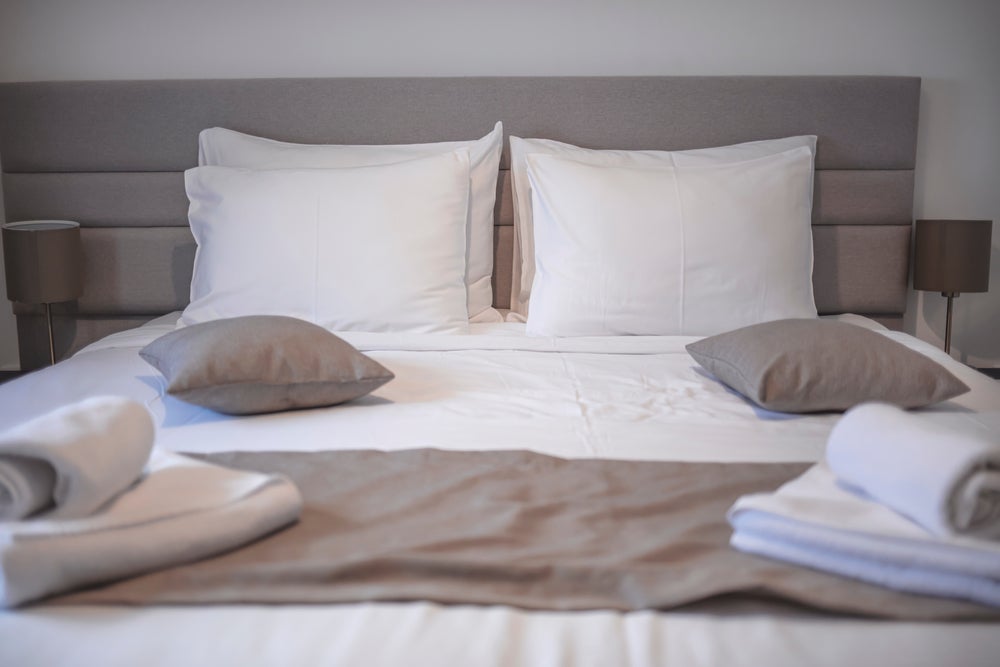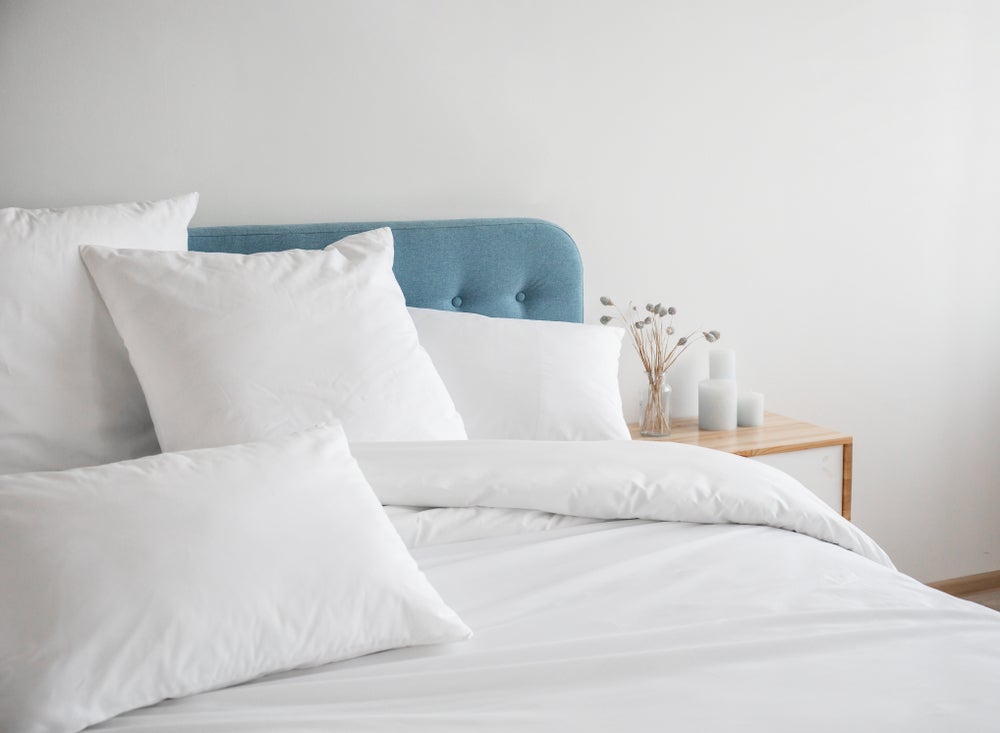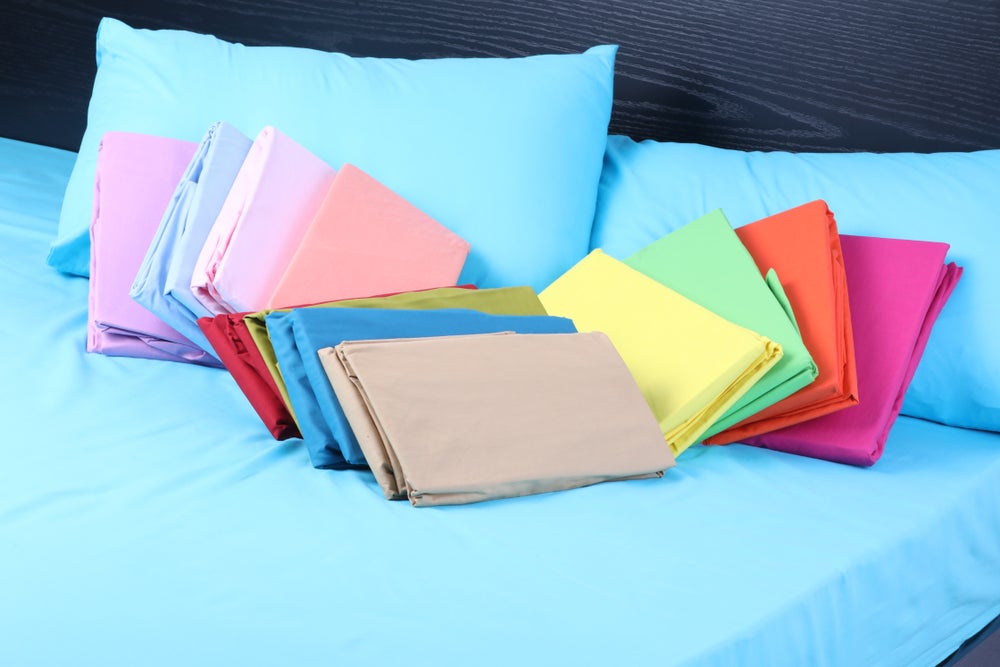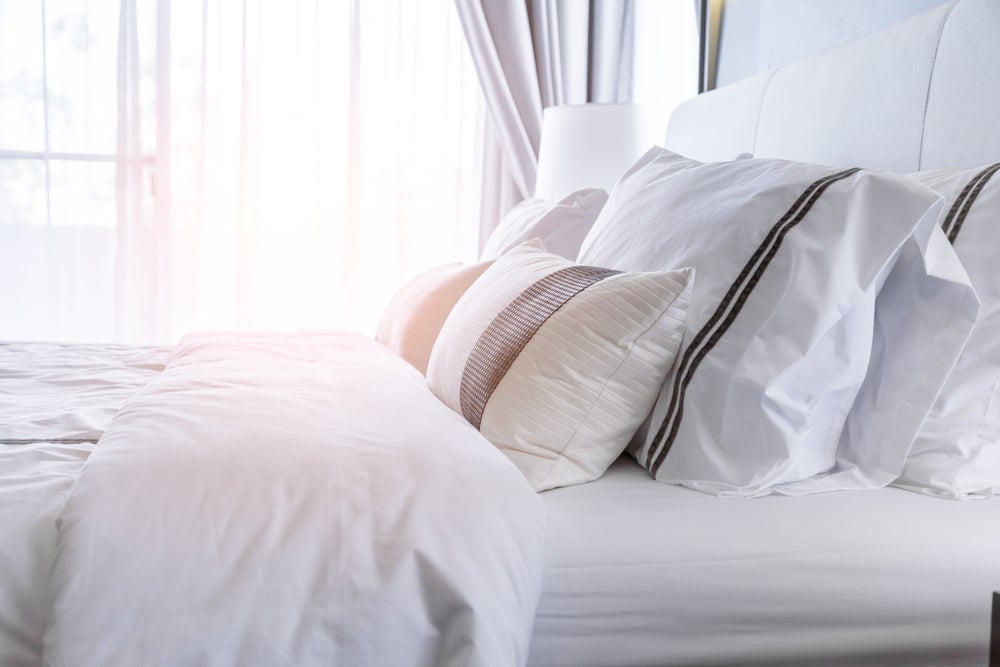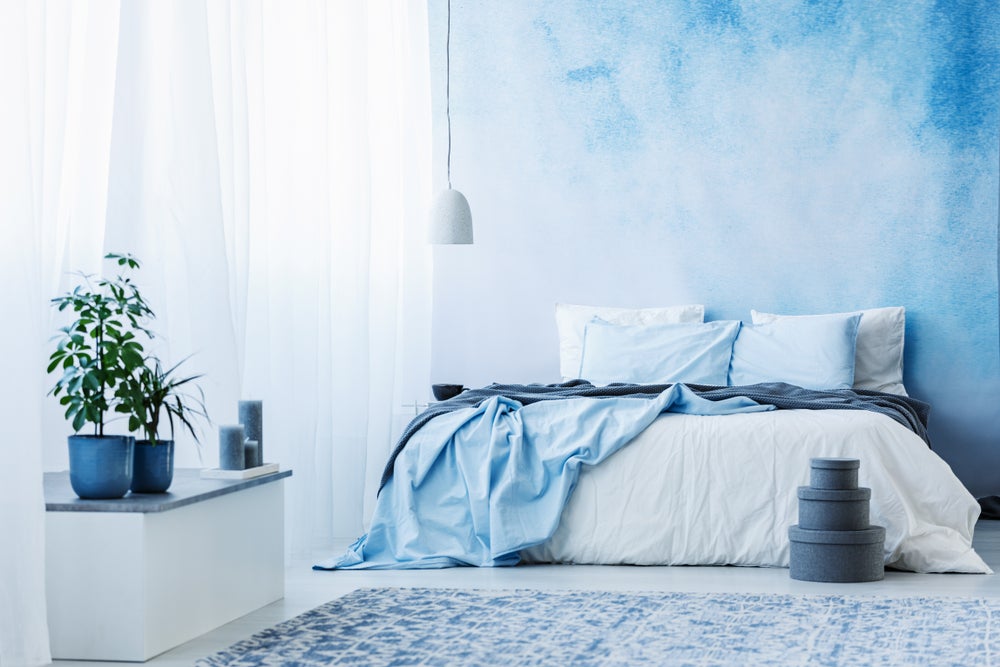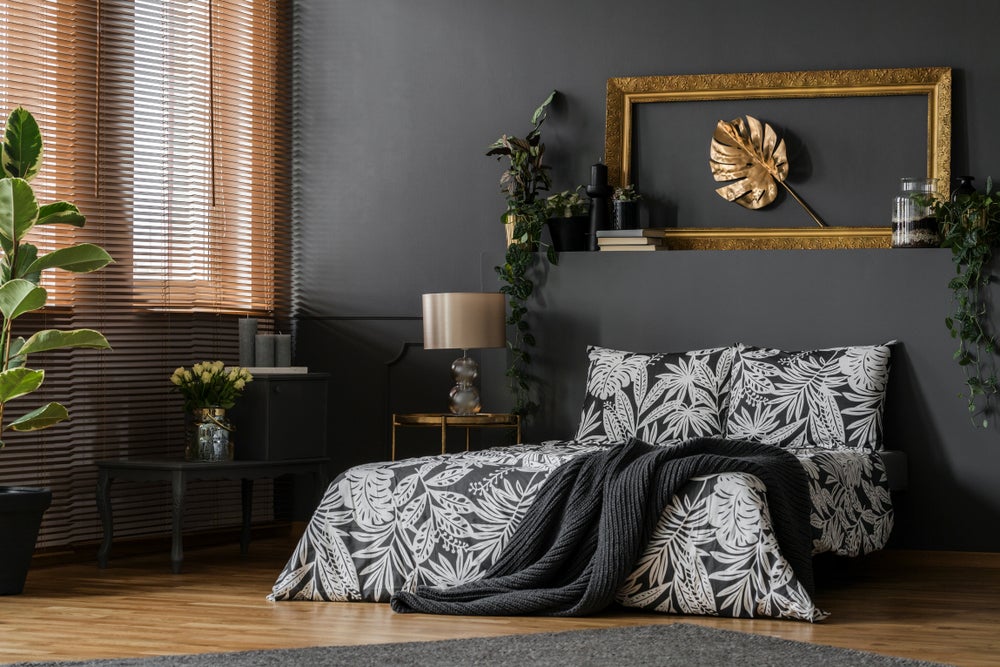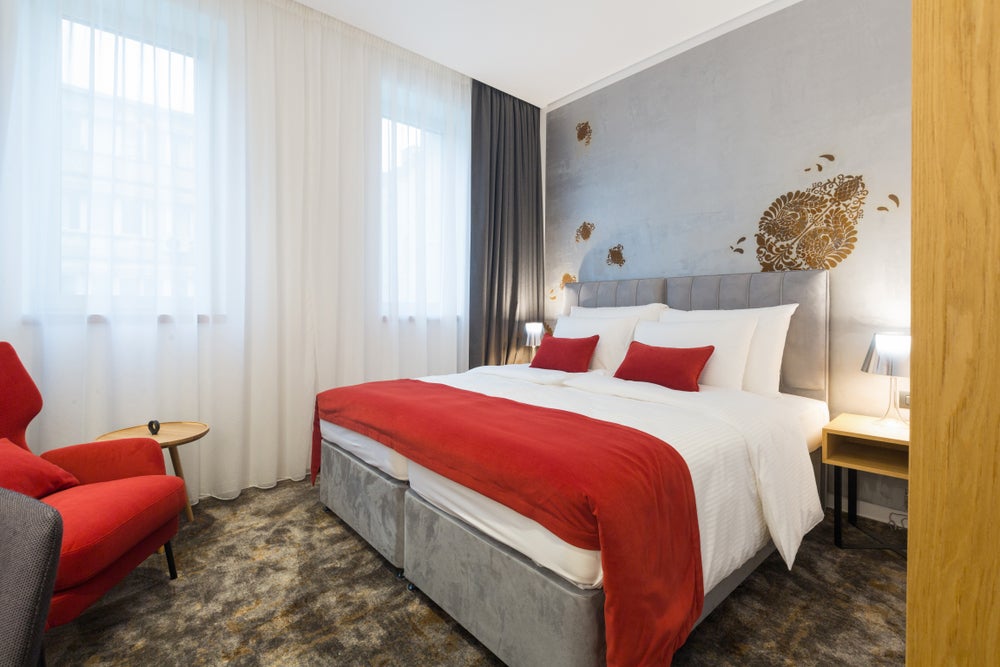Designing and styling your home is a pleasant experience, even if it’s sometimes overwhelming. To be able to show your taste and personality in the way you decorate gives you a sense of fulfillment and joy that can’t be beat. Of course, you might get caught up in the details and have very specific opinions on certain aspects of the design, especially in your bedroom, but you might also be stumped or completely overlook the importance of a basic background.
But when you’re trying to create a certain look and feel to a particular space, color is extremely important, and sometimes it’s the small things that matter most. Colors can have a psychological effect on the brain, and that means you have to consider carefully what palate you want palette you want to use for what purpose. One of the hardest things is remembering to think all the way down to the bedding you use, which might seem very elemental, but you can literally change the entire theme and purpose of your bedroom just by making sure you pick the best color for bed sheets. How do you know what’s right for you?
You may be interested in: Are Your Bedsheets Dirty? How Often Should You Wash Them?
Your Bedroom
The most important part of designing your bedroom is determining the purpose of the room. After all, for some it’s a haven from the outside world and a place to be alone to think, while for others, it’s a nest with a partner. Some people have an office in their bedrooms, while others have exercise equipment or electronics. But the most important function of a bedroom is to house the bed where you sleep. So, when you’re pondering the décor for your bedroom, you should keep in mind that the central purpose of the space is to serve as an environment where you can rest and recharge. In doing so, you’ll want to pick colors that are conducive to sleep.
The Importance of Sleep
Why is it so important to get enough sleep? A lot of people assume it’s so that your body and mind can go into a state of ‘rest’. But this couldn’t be further from the truth.
Actually, when you’re awake, you’re constantly doing things – conscious things that take up all your focus and energy. Sure, your body reserves a little to complete automatic functions like breathing and digesting food, but there are so many other things your body needs to remain healthy. Like any machine, your body goes through maintenance cycles every night, and if you don’t sleep, a number of things can’t happen.
For example, dreams help consolidate memories so that you continue to grow and learn mentally day by day. In addition, hormone production and other such functions only take place while you’re sleeping, meaning that you’d have difficulty with weight gain and other important health factors if you didn’t get enough sleep.
While choosing the wrong color for your bed sheets might not exactly cause insomnia, it can have a negative effect on you in many ways that may lead to a deficiency in sleep quantity as well as quality.
Creating Your Sleep Environment
This goes beyond creating feng shui or having the comfiest mattress. When you take into account the need for solid, restful sleep in comfort, you probably shop for the best mattress and cover it with bedding that is smooth, soft, and breathable. You may have a set of thicker, warmer sheets for the winter as well. All of this is important to a good night’s sleep. However, you may not have considered color as a factor. But the color is just as important to a soothing environment as the material and quality. In fact, it’s believed that the color of your bed sheets can impact your psyche as much as the color on your bedroom walls.
The Use of Color
Colors have a psychological and emotional impact on each of us, and while some of that is learned behavior from society, much of it is just nature and instinct. We also have adverse reactions to particular color combinations, just like other coordinating colors are pleasant to the eye.
Irritants, whether a single color or a motif, can cause all sorts of problems, stemming from your visual attempt to reconcile what you’re seeing and process it. Your vision can be affected, and such scenarios will often cause massive headaches or negative emotional responses ranging from discomfort and anxiety to fear and anger. All of which can cause disorders such as insomnia.
You may not think as carefully about the color of your bed sheets, figuring this is a minor detail in the grand scheme of things. In fact, the sheets may often be covered with a quilt or duvet. But these very basic parts of your décor can change the overall effect of the space if the color isn’t conducive to the rest of the design.
This is why the most popular colors for bed sheets are white, ivory, and a light brown or beige. Although, they’re not great to hide stains. These neutral colors lend themselves to almost any design, matching most other colors without creating that irritating clash or eyesore. The question is, does this really work out? Are these simple colors, which make up about 90 percent of linen sales in the United States, the best colors for bed sheets? Let’s explore other options to compare.
You may want to read: Duvet vs Quilt: How to Choose
The Right Feel
Regardless of who you are and what preferences you have, there are certain ‘themes’ you want for your bedroom regarding purpose and overall feel. First, you want to make sure you avoid visual fatigue, which means you don’t want the area to be too busy or contain colors that clash and irritate. Also, too many bright colors can cause fatigue to your vision. In addition, you want your bedroom to be soothing, relaxing, and a place where your body doesn’t feel the need to stay alert all the time. Your bedroom is your haven where you rest, and you need to choose colors that work together to create this atmosphere.
At the same time, because you have to get up in the morning and live your busy life, you also want the color combination to promote productivity rather than hold you back. So, the same colors and designs that soothe you to sleep should also help you feel well rested and able bodied in the morning, with a clear head and a drive to succeed. It sounds complicated, but when you begin to understand the psychology of colors, choosing the best color for bed sheets becomes much easier.
Does Gender Matter?
It probably doesn’t surprise you to know that different colors – or at least, different hues – appeal to women versus men. For example, women like tints – lighter versions of colors with more white blended in – whereas men prefer shades – darker versions of the same colors with more black incorporated into the hue. Men also consider simpler designs with more basic colors, whereas women tend to be more in tune with accent colors and varying hues that blend well. So, how do you incorporate the best colors when you’re a couple?
Settling on neutral colors around the room can help, and utilizing a blend of shades and tints can create a comforting space for both men and women. Also, keeping the background colors neutral – such as the bed sheets in the traditional white or beige – can satisfy the need in men for simplicity while allowing women more freedom to get creative with accent colors through wall art and throw pillows.
Your Ultimate Goal
If you struggle with sleep on occasion or suffer from a sleep disorder, you’ll probably want to choose the color of your bedding and décor based on the need for a better night’s sleep. According to one survey, people with blue backgrounds in their bedroom get the best night’s sleep, both in terms of quantity and quality. So, perhaps you should consider the various shades of blue available.
Dark blues can help create a deeper, more soothing sensation, much like the midnight blue of the sky outside. Pale and pastel blues are equally comforting, resonating with the happiness and contentment of a summer day and the peace it brings. Shades and tints of blue have always been associated with calm, as these are colors found in nature that tend to correlate with contentment, including the ocean. Studies show that blue can even reduce heart rate and lower blood pressure, which will also assist in a sounder sleep.
On the other hand, if you are more concerned with your love life, the same survey showed that people with brown and caramel colored bedding and décor were more likely to have an active and healthy sex life. Opting for these richer (but still neutral) tones could help you in that area of life and still help promote a good night’s sleep after the action.
Why White?
White, off-white, eggshell, cream, ivory. These have been the basic colors for linens for a long time, likely started because bleaching these light colors was easier, and all cleansing used to involve heavy bleaches. However, there are plenty of other reasons to go with these basics for bed sheets, aside from the ease of designing around them.
White and similar tones feel ‘clean’. As mentioned, bleach is often used to keep white pristine, and much the way medical facilities are often brilliant white and sterile, the idea of cleanliness is promoted with white. Of course, you don’t want that clinical appearance, which is why other colors can be incorporated elsewhere in the bedroom with the white sheets only providing the basic background.
Neutral Colors
If white is too plain or ‘clinical’ for your taste, or you’re worried about discoloration over time, you can try off-white, cream, or beige. They give the same neutral effect, allowing you to decorate around them with any color because they match almost every color under the sun.
To keep things from feeling monotonous, you could opt for a pattern or embroidery, livening up the design of the sheets. Finding materials that have an embroidered design stitched with the same color won’t offset the way that the sheets match the rest of the room and will offer both texture and a break in the singular color of the bedding.
These neutral colors may also be better for producing a comfortable sleep environment. They aren’t as bright, and that makes them more soothing to the eyes and psyche. And since being comfortable in your bed and the material you choose is equally essential to a good night’s sleep, choosing a color that promotes this can make a big difference.
Another way to make a statement with neutral colors is to intermix them. For example, you can purchase two sheet sets – beige and white – and pair the alternating colors as top and fitted sheets. Also mix the pillow cases. This makes the colors pop similarly to bright colors in the space, while still being soothing and conducive to quality sleep.
Warm Colors
While blue is at the top of the list for most soothing nighttime colors, as mentioned before, there are others that come in close behind. If you find yourself attracted to yellow, you’re in luck – yellow tends to promote a healthy nervous system, stimulating nerve function but soothing the nerves overall. That’s not to say you should paint your walls a sunshine yellow. However, you could use a warm yellow with a lighter tint coming through in your bedding. Those who sleep in environments that incorporate yellow have proven to wake up happier – or cheerier – and more refreshed.
With blue and yellow so high on the list, it might not be incredibly surprising that green, too, is a preferred color for bedding and décor. A blend of yellow and blue, it seems natural that earth toned greens would be quieting to the soul. Colors such as forest green, moss, and sage tend to offer the best background, both for walls and linens.
Other Surprising Options
Silver may not be the first idea that pops into your head when considering the best color for bed sheets, but surprisingly enough, it is fairly popular. Perhaps, this particular option mimics the glow of stars and moonlight, and the way it glints off water (which is the source of a soothing color itself) strikes the psyche as a ‘night’ color. It’s a cooler color than those at the very top of the list as well, so it might actually aid on a psychological level in keeping you cooler at night, producing a more comfortable sleep. Note, however, that gray does not perform as well. While it’s a preferred color by some men (mostly very firm career types who spend a lot of time working), it doesn’t bode well for sleep in women and couples.
Maybe one of the most surprising ideas for bedrooms is orange. While an initial reaction may be that this particular choice is too bright and too closely related to red, which can actually be aggravating to the senses when overdone, orange actually produces a number of benefits. Consider how the sunrise and sunset are quite appealing and often glow in shades of orange, you’ll see the correlation again to nature and contentment. But the most encouraging description by people who have warm orange tones for bedding or décor is that the color creates a ‘stable and reassuring atmosphere’. In addition, it’s been shown that orange can assist with digestion, helping you sleep better.
Is There Merit to Black Sheets?
While not the most popular color for bed sheets, black does have its advantages. It’s one of the most subtly sexy colors available, which means that people who opt for the darkest of dark non-colors typically either expect or have a more active sex life. At the same time, black is the color of a very dark night, so it can actually help lull you to sleep. Still, many find that awakening surrounded by too much darkness can have the opposite effect they want, making it difficult to get up and be active in the mornings. If you’re a morning person and don’t feel it will harm your ability to get moving in the wee hours, black can make a great background, matching any color décor and also negating any concern about staining or discoloration.
The Problem with Patterns
While it may seem intriguing to buy patterned sheets, they tend to lock down exactly what you can do in the surrounding area. It limits your decorating options significantly, since not all colors will match, and the pattern might actually clash with some other pattern you have in the room, such as a tapestry or rug. If you do want patterned linens, remember to keep it simple, with minimal colors that are preferably earth tones or neutral, and not overly ornate. This will help you open up more choices for the rest of the bedroom, though you will likely need to go with solids all around.
An Accent Sheet
If you like bright colors, you’ve probably noticed that they typically aren’t considered conducive to a good night’s sleep. However, you can still incorporate your favorite bright color into your bedding in subtle ways. For example, you can opt for neutral colored pillow cases and fitted sheets, utilizing a single accent sheet as a top sheet. In this way, you can bring a splash of your favorite bright color into the mix without overwhelming the senses or creating an unwanted mood in the bedroom.
In this scenario, however, you’ll still want to assure that nothing in your space clashes with the accent color you use. Instead, find small ways to bring the same hue into other parts of the space – a single throw pillow on a bench, a framed photo with that color notably displayed, or even a tapestry that incorporates a similar shade into its overall design.
Making the Final Decision
When you start picking out colors for your bedding and décor, find inspiration. It could be the custom paint job on a car in the parking lot at work, a flower in a pasture, or some accent in a painting. Whatever catches your eye can be the source of your design decisions. However, don’t take it and run with it – have a plan of action behind your purchases. Consider creating a mood board, something you can use to match up the right colors so you don’t end up with a disaster of clashing shades and patterns.
Use that setup to figure out the background color that will grace your walls and cover your bed, and then you can use everything else as accents to dress it up. Mix and match and really take your time, even if you’re a spontaneous sort of person. After all, you don’t want to be stuck with something you end up hating because you were in a rush. Besides, if you choose the right bed sheets, you can go for instant gratification by changing the rest of the décor at a moment’s notice without having to replace the essentials.
The Bottom Line
The color of your bedding is a personal choice. While there are colors proven to assist in creating a quality sleep environment, the truth is that, if it doesn’t work against good sleep habits and makes you happy, it’s a good choice for you. As you make your decision, consider opting for bright colors as accents rather than bases for the rest of your design, keeping the overwhelmingly bright shades and tints to a minimum, and if you have a favorite color that’s not listed here, you might want to opt for a more subdued version of that color for your sheets or walls.
There is no one right answer when it comes to choosing the best color for bed sheets, but with an accurate and complete guide like this, as well as a better and clearer understanding of how colors affect the psyche, you can make a more informed choice that helps you satisfy your inner designer while also giving you the basis for the full quality night’s sleep you need in a haven of your creation.
Photo credit: Pixel-Shot/Shutterstock; Dragana Gordic/Shutterstock; World_of_Textiles/Shutterstock; Mohammad Hashlamoun/Shutterstock; WHYFRAME/Shutterstock; Ground Picture/Shutterstock; Edvard Nalbantjan/Shutterstock
Frequently Asked Questions
What color sheets are best for hiding stains?
Washing your bed sheets regularly is vital to maintaining good hygiene, but if you like to snack in bed, have kids who like to cuddle with you under the sheets, or are a hot sleeper, it’s likely that little spills, sticky fingers and sweat will all leave stains that won’t disappear after a wash. One way to take care of that without having to throw out a good set of bed sheets is to purchase them in a color that is good at hiding or camouflaging the stains. According to some sleep and color experts, grays and dark toned sheets are excellent color options for hiding stains. For a more calming ambience, blue sheets, especially dark blue, will work well, too. Black sheets, of course, are also a contender, especially for hiding dirt. If plain, monochromatic sheets aren’t your style, then look for ones with a pattern, something funky or floral, as these do a fine job at hiding messes and stains.
What color bedding makes a room look larger?
With space at a premium, these days, bedrooms are becoming smaller and smaller. Thankfully, there are some tricks you can play to give the space the illusion of being larger than it is. One way is with the color of your room decor, including the bed sheets. Blue, white, grey and green are considered “cool” colors and tend to expand a room and make it feel larger. Warmer colors, such as red, orange and yellow, are thought to make a room feel cozy, yet appear smaller. And if you’re not into solid colors, you’ll be happy to know that sheets that have vertical stripes elongate the look of a room, while horizontal stripes give the impression of a wider space, keeping in mind that the cooler tones will help to accentuate the effect.
What color bed sheets do the best hotels use?
Some of our best and most luxurious experiences have been while vacationing at hotels and resorts, so it’s no surprise that many people want to emulate that look and style in their own bedroom. Most luxury hotels, and even hotels that are only two or three stars use white sheets on the beds. This is not only because white looks crisp and clean and matches with any decor, but it is also a way for the hotel to prove their standard of cleanliness. Clean, white linens eschew luxury, so if you want your bedroom to feel luxurious and pristine, white sheets are the way to go. Of course, you can soften the look by adding an ivory, or cream colored duvet and some textured throw pillows.
